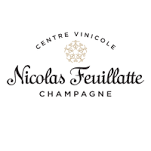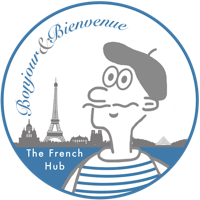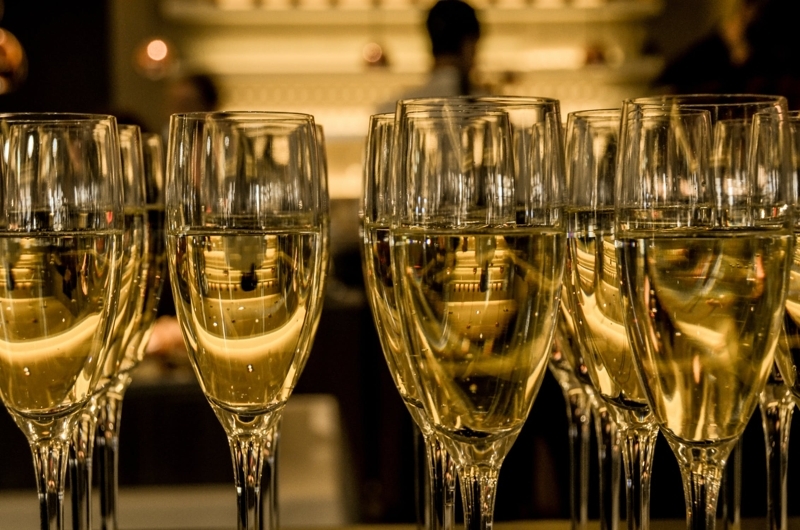Festive and fancy, champagne rhymes with celebration and special occasion. It spells elegance and luxury, and it is the drink of choice to celebrate and toast to life’s most important moments. In France, there about 260 Champagne Houses, which produce roughly 300 million bottles in total, yearly. Each of these ‘Maison de Champagne’ all have the same thing in common: an unsurpassed expertise in the ‘terroir’, and an unequalled excellence in the ‘savoir-faire’ of the art of champagne-making, an excellence which is renowned throughout the world. What sets them apart, however is their unique history, and their ability to each produce champagne with such a distinctive personality.
In this article we take a look at what is Champagne and an overview of the history of the great Houses of Champagne since 1729 when they were first established.
What is Champagne?
It all begins with one specific area of France: Champagne. Champagne is an area located east of Paris. This rich agricultural land listed on the UNESCO World Heritage list, is where the world-famous bubbly is produced. Champagne is the name given to the sparkling wine produced in the Champagne region using the “Méthode Champenoise”. “Méthode Champenoise” describes the traditional method of fermentation which is used to make champagne. A sparkling wine, can only be labelled “champagne” if it has been produced in the region of Champagne. About 300 million bottles of Champagne are produced in the region each year.
Champagne is made from a blend of only 3 types of grapes : Pinot Noir, Chardonnay and Pinot Munier grapes.
There are different types of champagne: vintage, non-vintage, blanc de blancs or rosé. Vintage indicates that it has been produced from the grapes of a single year. Vintage champagne tends to be more expensive because it is dependent on the conditions of an exceptional year of harvest. Non-vintage means it is a blend of several vintages. Blanc de blancs champagnes are the ones made exclusively with Chardonnay grapes. Rosé champagne is made by mixing red and white wines.
Champagnes come in different categories depending on their sugar levels: extra brut, brut, extra dry, sec and demi-sec. Yeast and sugar are added to wine for a second fermentation, that is what creates a champagne. It takes years to craft a fine bottle of champagne. Sparkling wine produced anywhere other than the region of Champagne, but produced using the “Méthode Champenoise” is called a “crémant”. There are other sparkling wines in France which are produced with other methods, not the “Méthode Champenoise” these sparkling wines are called a “mousseux”.
Fun facts
- “L’Avenue de Champagne”, located in the city of Épernay (known as the capital of champagne) is said to be the most expensive avenue in the world because of the millions of bottles of champagne that are stored throughout the vast 155 miles of white limestone tunnels and chalk cellars beneath it.
- House Veuve Clicquot for example, has an estimated 40 million bottles of champagne stored in its cellars on L’Avenue de Champagne.
- 33% of Champagne sales are made during the months of November and December.
Fun facts
- Champagne was first invented by Benedictine monks in the 16th century.
- During the harvest period, 120,000 seasonal workers come to the Champagne region to help pick the grapes by hand.
- “Sabrage” means opening a champagne bottle with a sword. In France this is the custom during certain ceremonies, most often associated to military circles.
- Champagne corks are under such pressure that they can travel at a speed of up to 30 miles an hour.
- It is estimated that a bottle of champagne has about 49 million bubbles.
Champagne connoisseur kit essentials
Here are four essential components to every Champagne connoisseur. We picked them as they bring elegance and practicality together at a reasonable price. Click on each item to read more and purchase*.
As an Amazon Associate we earn from qualifying purchases.
The great Houses of Champagne
Since*
1668
Dom Pérignon
The Benedictine monk Dom Pérignon, is considered the ‘father’ of Champagne as we know it. He started producing champagne in 1668 at the Abbey of Hautvilliers – now known as “the birthplace of champagne.” The particularity of Dom Perignon is that it only produces vintage-dated bottles. They are aged 7 years before going on the market. Vintage bottles mean they are produced using the best grapes grown in a single year.

Since
1729
Ruinart
Founded in 1729, it is the very first established House of champagne. Its cellars are classified as a national monument. Particularly famous for its Brut Rose – Rosé Champagne which is a blend of pinot noir and chardonnay. This champagne was a favorite of French royalty and continues to be popular with today’s celebrities.
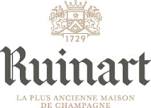
Moët & Chandon
Located in the heart of the Champagne region, Moet & Chandon was established over 270 years ago by Jean-Rémy Moët. Emperor Napoleon Bonaparte awarded Jean-Remy Moët the Legion d’honneur – one of France’s most prestigious awards. Moët & Chandon Moet Imperial is one of the best selling champagnes in the world. You can visit its 28km of underground tunnels located under the city of Epernay. These underground chalk cellars provide the perfect conditions for the process of fermentation needed to create the exquisite Champagne that Moët & Chandon is famous for.

Since
1760
Lanson
Established in 1760 by Francois Delamotte, this is also one of the oldest Houses of Champagne. It holds a Royal Warrant since 1900 as an official supplier to the British Royal Family, and is also the official Champagne of the Wimbledon championships since 2001. Its core champagnes, created from its 57 hectares of land, are the Black Label Brut, the White Label Sec, the Lanson Blanc des Blancs and the Lanson Rosé. Its cellars house some of the greatest century-old vintages.

Veuve Clicquot
Producing luxury champagnes since 1772. The House of Clicquot owes its world-wide reputation and success to Barbe-Nicole Ponsardin, the young window of François Clicquot. The strong-minded 27 year-old, took over the company when her husband died prematurely, and transformed it into an iconic brand. The Clicquot brand has been adored by European aristocracy for centuries, and was particularly popular among the Russian Court . Clicquot-Ponsardin, is known as the “Grande Dame de Champagne” for her innovation and success. She invented the “riddling table” a process which transformed champagne making. One of its most emblematic champagne is the Veuve Clicquot Yellow Label Brut. Veuve Clicquot produces 18 million bottles each year, making it the second largest champagne producer in the world.

Since
1776
Louis Roëderer
This family-run business dating back to 1776, is one of the most prestigious and also one of the last independent champagnes Houses. It’s best-seller is the “Cristal” champagne – known to have been created for Tsar Alexander II of Russia. In the 1870’s Louis Roederer was already exporting its champagnes to the United States.
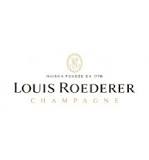
Since
1785
Piper-Heidsieck
Established in 1785 by Charles Heidsieck, Piper-Heidsieck was Queen Marie-Antoinette’s favorite champagne. Made primarily from pinot noir. In 1885 Piper-Heidsieck partnered with famed jeweler Pierre-Karl Fabergé to create unique jeweled bottles for its 1885 Prestige Cuvée. Also a favorite among such Hollywood stars as Ava Gardner, Humphrey Bogart, Fred Astaire Piper-Heidsieck can also be seen on the big screen of several movies. Since 1993 it is the official supplier of the legendary Cannes film festival.
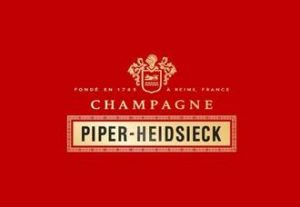
Since
1811
Perrier-Jouët
Pierre-Nicolas Perrier and Rose-Adelaide Jouët, both passionate about arts, nature and champagne, founded their Champagne House just one year after getting married, over 200 years ago. Today this is one of the most admired vineyards in the region. Their expertise using Chardonnay is their trademark. Their signature champagnes are the classic Perrier-Jouët Blanc de Blancs and vintage Perrier-Jouët Belle Epoque Blanc de Blancs.
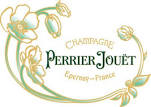
Since
1812
Laurent-Perrier
Founded in 1812, Laurent-Perrier exports its champagnes to 160 countries worldwide. This champagne house, like Veuve Clicquot, also owes much of its success to a widow of strong character. Mathilde Emilie Perrier, widow of Eugène Laurent, ran the business with great determination and is behind the success story of Laurent-Perrier.
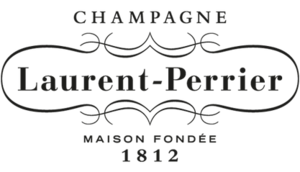
Since
1827
G.H Mumm
This house of champagne was established in 1827. Champagnes from the the Mumm house were also favorites of Europe’s most illustrious royal families from Scandinavian royalty to Austria-Hungary or even The Netherlands and Prussia. Maison Mumm is one of the official suppliers of champagne to Her Majesty Queen Elizabeth II. One of its most iconic bottles is the Mumm Cordon Rouge which features a red ribbon. Each bottle of Mumm Brut Rosé features a work of art on the cap of the its cork. G H Mumm is often the champagne of choice of Michelin starred-chefs.

Since
1829
Bollinger
Champagne House since 1829 was founded by artistocrat Athanase de Villermont, businessman Joseph Bollinger and local expert Paul Renaudin. Today Bollinger champagne is present in over 100 countries. It is known as the most “British of champagnes” as it is the official champagne brand of James Bond. Bollinger champagne has been featured in James Bond movies since “Live and Let Die”. “La Grande Année Brut 2012” is its famed vintage champagne.

Since
1836
Pommery
Created in 1836, this house of Champagne is located in the heart of the city of Reims on a stunning estate. Led by Madame Pommery’s ambitions, and formidable intelligence, the Pommery House launched what became known as the “construction project of the century” in Reims: 18 kilometers of interconnected wine cellars were dug 30 meters underneath the city and they are accessible by a spectacular 116 step-staircase. Pommery is best known for its Brut champagne.

Since
1843
Krug
Krug House, located in Reims, was founded in 1843, by Joseph Krug, whose ambition was to offer the best champagne every single year, regardless of the year’s harvest. With that in mind, his first champagne was born in 1844 : Krug Grande Cuvée. Its Krug Grande Cuvée remains its signature champagne. It is made with a blend of 140 wines stemming from up to 13 different years of harvest, and it is fermented exclusively in small oak casks for at least seven years. Today the Krug house is directed by Olivier Krug, the sixth generation of the Krug family. The wall of 400 wines is one of the main attraction during the visit of the House of Krug.
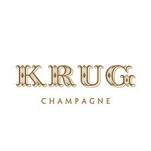
Since
1849
Pol Roger
Pol Roger Champagne launched its first production in 1849. The House had to overcome disaster when in February of 1900, they lost 1.5 million bottles after part of its cellars and buildings collapsed. Despite several more setbacks due to World War 1, prohibition in the United States and the Russian Revolution, Pol Roger champagne continued to grow thanks to the determination of the two Pol Roger brothers . A favorite of Winston Churchill’s, he once described Pol Roger Champagne as “the most delightful address in the world” . Cuvée Blanc des blancs Winston Churchill in 1975 was one of its most celebrated cuvées. The Pol Roger Brut Réserve NV was also one of the official champagne of the royal wedding of William and Catherine – Duke and Duchess of Cambridge.
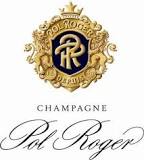
Since
1932
Taittinger
Taittinger, which was founded in 1932, is one of the last family-run estates. Former military officer Pierre Taittinger purchased the castle de la Marquetterie located in the heart of the Champagne region. Maison Taittinger started out with a domain of 20 acres and now covers 752 acres. It is the 3rd largest domaine in Champagne. It is unique as it is a champagne created with 40% chardonnay. Its champagne ranks among the finest.
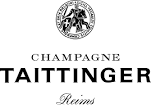
Since
1976
Nicolas Feuillatte
Founded in 1976, it stands out as a relatively young Maison de champagne. Although more modern than many of its counterparts, it is one of the best selling Champagnes in France, and the 3rd largest brand in terms of world-wide sales with exports to 90 countries.
